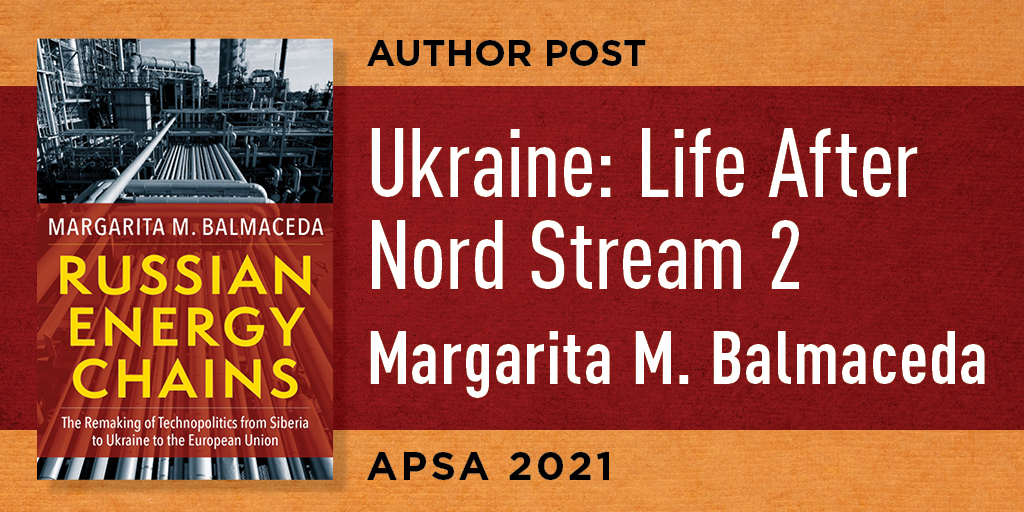Ukraine: Life After Nord Stream 2 By Margarita M. Balmaceda

Much has been written about the Nord Stream 2 natural gas pipeline, the second set of lines of the Nord Stream pipeline, which transports natural gas from Russia to Germany under the Baltic Sea without going through the territory of traditional transit partners such as Ukraine. This second line would double the system’s initial capacity to a total of 110 billion cubic meters (bcm) per year. A key issue has been the effect on Ukraine, which as recently as ten years ago transited nearly 80 percent of Russia’s natural gas exports. So when the United States and Germany reached an agreement to green-light the pipeline on July 21 (the “Joint Statement of the United States and Germany on Support for Ukraine, European Energy Security, and our Climate Goals”) and the pipeline was officially completed on September 10 (though not put operation), many in Ukraine cringed, thinking of Ukraine’s loss of nearly $2 billion in yearly transit revenue, although Gazprom has promised that some level of transit through Ukraine would continue after the current agreement expires at the end of 2024.
A key issue has been the effect on Ukraine, which as recently as ten years ago transited nearly 80 percent of Russia’s natural gas exports.
Leaving aside whether such promises will be kept, what I learned while writing my new book, Russian Energy Chains, makes me realize the situation is much more complicated—and worrisome. It all goes back to the issue of natural gas’s materiality (i.e., how the physical characteristics of different types of energy affect how each behaves and what can and cannot be done with it). A 50 percent decline in transit volume may mean a 50 percent decline in transit fees, but in terms of the actual functioning of the pipeline (not only for export but also for domestic supplies), a 50 percent decrease in volume actually means much greater decline in operational quality. Natural gas, being lighter than air, will not move at all in the pipeline without pressure—so a key element in natural gas supply chains is maintaining the right level of pressure. If the volume of natural gas in Ukraine’s pipeline system goes below a certain percentage of its capacity, not only it becomes harder for the natural gas to move forward in the pipeline, but harder for the country’s domestic natural gas supply system to work properly as well. So Gazprom’s reassurance that some level of transit will continue is not reassuring. A pipeline filled to 50 percent volume will have a very hard time working.
It explicitly singles out the need to speed up the move away from coal.
But there may be some light at the end of the pipeline. Even if the joint U.S.-German declaration came as a rude awakening for many, it may offer some hope. Buried behind several vague and hard-to-enforce statements on Gazprom’s maintaining some volume of transit and on sanctioning Russia should it try use energy for political purposes is something that may be of real value: the launching of a US$1 billion Green Fund for Ukraine to support Ukraine’s transition to a low-carbon economy (though only US$350 million has been committed so far). It explicitly singles out the need to speed up the move away from coal. If implemented, this would effect a generational change in Ukraine, increasing the country’s energy resilience, drawing down its CO2 emissions, beginning to ameliorate the long-term negative effects of the country’s failure or unwillingness to reform the coal sector since its independence in 1991. This failure has caused harm to the ecology of Ukraine and allowed the systemic misuse of subsidies that helped prop up the power of coal-steel oligarchs such as Rinat Akhmetov while keeping on life support an unsustainable regional economy, creating favorable conditions for Russian intervention in the area. I discuss all this in the chapter in Russian Energy Chains that takes coal as a case study—full of intrigue, the most exciting chapter of the book for me.
Moreover, while many in Ukraine are working hard to prevent Nord Stream 2 from starting operations, it may well be that Nord Stream 2, though painful in the short term, could force Ukraine to build upon the future and not the past. The EU is ever more committed to a low-carbon future where the role currently played by natural gas will be taken over by renewable energy sources—which already account for over 46 percent of electricity generation in Germany, up from 7 percent in 2000. Ukraine would do best to embrace the future rather than holding on to a fossil fuel past.
Margarita M. Balmaceda is a professor of diplomacy and international relations at Seton Hall University. She is the author of Russian Energy Chains: The Remaking of Technopolitics from Siberia to Ukraine to the European Union.








